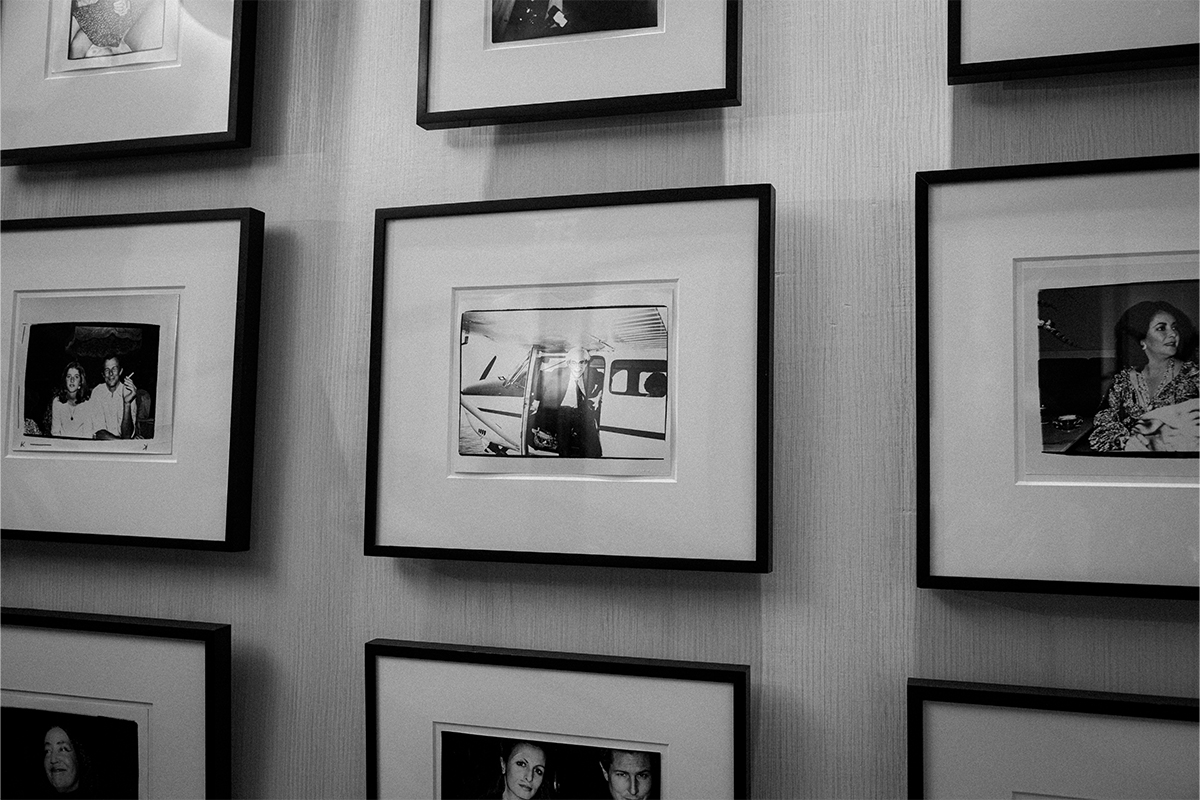
Andy Warhol’s polaroids framed at Bar Nineteen12 at The Beverly Hills Hotel
To be a fly on the wall at Studio 54, privy to Hollywood glamour and New York nightlife, during Warhol’s heyday is now closer than ever. The largest private photography collection of its sort is currently adorning the walls of the context-appropriate Beverly Hills hotel. LUX speaks to the art curator of The Beverly Hills Hotel and Hotel Bel-Air, Jim Hedges, to find out more about the curation and selection of images
The collection, belonging to James R. Hedges consists of photographic still life moments and memories of Warhol’s innermost circle of confidants and collaborators, from Jerry Hall to Grace Jones, and will now reside on the walls of Bar Nineteeen12, which has reopened just in time to celebrate the Hotel’s 110th anniversary taking place this year.
The photos taken by his infamous Polaroid and a unique 35mm black and white silver gelatin print, are not only ‘behind the scenes’ moments of a star-studded life, but works of art in their own right that fit in a Warholian canon. From his use of photo appropriation from Hollywood stills in the 50s to use of a Times Square Photo Booth in the 60s, these photographs are decidedly closer to the artist’s hand than in previous snapshots.

Jerry Hall and Grace Jones are shown together at the Palladium night club in New York in May 1985. Image courtesy of Hedges Projects, Los Angeles. © The Andy Warhol Foundation for the Visual Arts
LUX: How did you find the challenge of curating in a space which does not have a sole artistic purpose such as a traditional gallery does?
JH: Art can be experienced in a variety of venues, and white box galleries are often sterile, intimidating and unwelcoming. Showcasing Andy Warhol’s works in a more residential, human-scale environment creates a more initiated engagement with the work and animates the space even more.
LUX: You will have so many people passing through the Bar, how does the curation urge them to slow down and enjoy the photographer?
JH: Each wall is installed with different themes and subjects, such that the visitor is taken on a journey into Andy Warhol’s world of celebrity, Studio 54, his own studio, The Factory, and organized by venues and subject themes.

Andy Warhol with Ronald Perelman at the Beverly Hills Hotel, circa 1985. Image courtesy of Hedges Projects, Los Angeles. © The Andy Warhol Foundation for the Visual Arts
LUX: How did you select the images from the large Hedges IV Collection of Andy Warhol Photography?
JH: I wanted to offer an encyclopedic survey of Warhol’s photograph oeuvre and pulled works which spoke to the best of his images and subjects and were relevant to The Beverly Hills Hotel in some manner.
LUX: Warhol is perhaps not as widely known for his photography; do you think the presentation of this collection will amplify this medium in his pop culture canon?
JH: Warhol was above all else a photographer. He used a camera from the time he was a child and nearly every painting or print he made in his career began as a photographic image, such as Hollywood publicity shots, newspaper images, or polaroid’s he took of his subjects at The Factory. Warhol’s first gestures as an artist were with a camera, and the final exhibition of his life was of photography.

Carol Burnett, 1978. Image courtesy of Hedges Projects, Los Angeles. © The Andy Warhol Foundation for the Visual Arts
LUX: How can these photographs give us a greater insight to Warhol as an artist, and further the wider social scene at the time?
JH: The works provide a survey of Warhol’s photography practice over the course of nearly 30 years giving us insights to his art making process, his social circles, his travels and his singular ability to identify iconic imagery.
LUX: Is there a photograph that defines the artist and the collection for you?
JH: The expansive breadth and depth of Warhol’s subjects show that there is truly a Warhol for everyone. His photography practice is so diverse that it defies limited definitions.
The exhibition is free and open to the public Tuesday – Saturday between 3pm and 11pm in Bar Nineteen12, at The Beverly Hills Hotel













Recent Comments